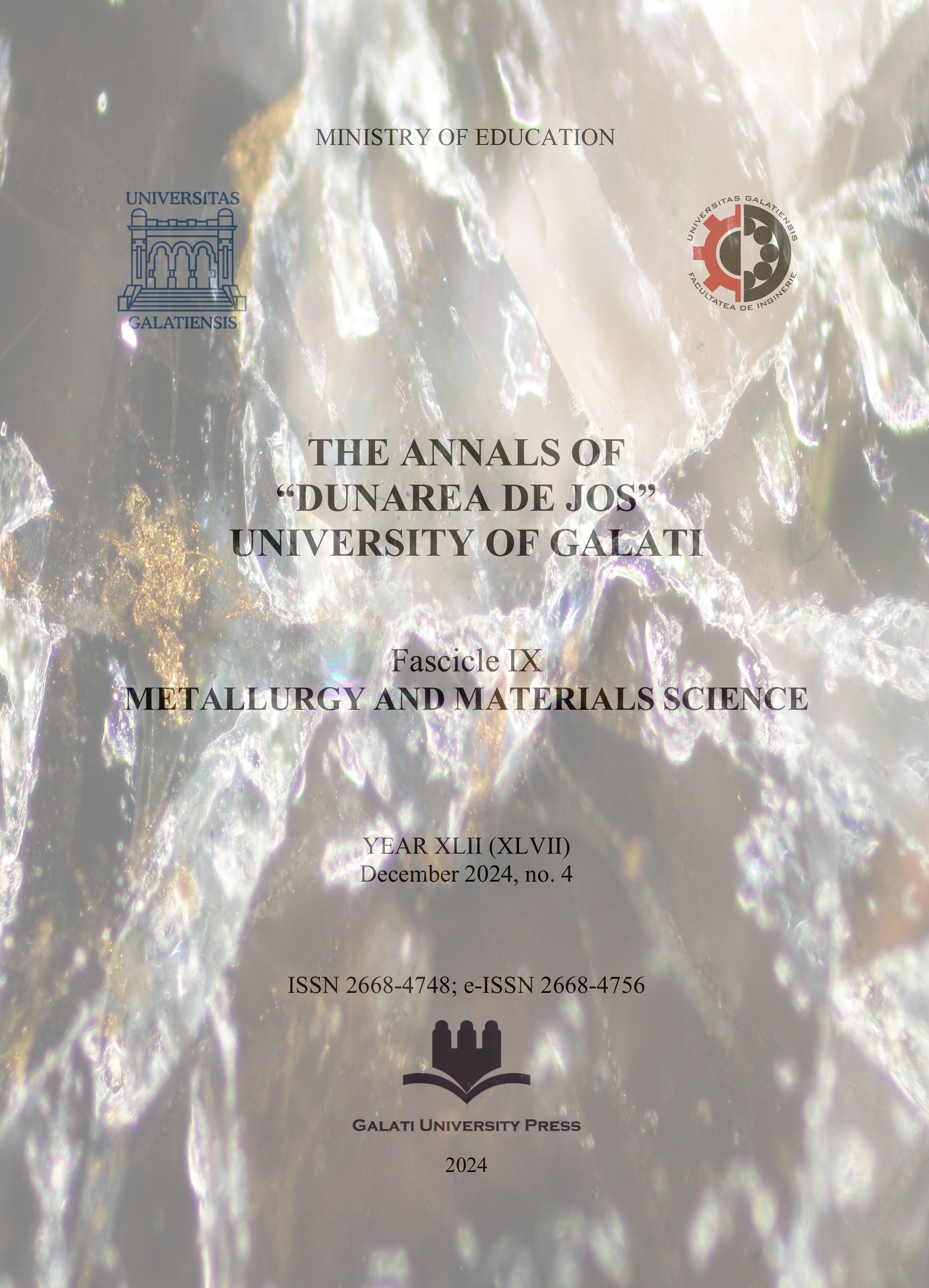Research on Nanostructured Hybrid Materials for Sensing Dopamine by Cyclic Voltammetry
Abstract
In this research, we present chemical method of obtaining hybrid nanostructured particles used to modify the screen-printed carbon electrode to detect the redox activity of dopamine. Dopamine (DA) is a neurotransmitter that plays a very important role in the functioning of mammalian systems (central nervous, hormonal, renal, and cardiovascular), and its deficiency results in the development of diseases (Parkinson's and Alzheimer's, restless legs syndrome, or schizophrenia). Magnetite and titanium oxide nanoparticles were functionalized by chemical reaction to be used to modify SPCE. The chemical method used to modify the nanoparticles was a sol-gel chemical reaction. The hybrid materials were analyzed by scanning electron microscopy (SEM/EDX) and by cyclic voltammetry (CV). The alcoholic solution based on magnetite-Fe3O4 (F1) and magnetite/titania-TiO2 (F2) was used is order to be dropped cast onto SPCE surface. The modified SPCE was measured at 0.1 V/s by cyclic voltammetry. The cyclic voltammetry was conducted using a Potentiostat/galvanostat multichannel electrochemical device from OrigaLys, France, OrigaFlex model OGF+01A. Optical microscopy (OM) analyzed the modified surface of screen-printed electrodes. The TiO2 was characterized through field emission scanning electron microscopy (FE-SEM) with EDX elemental analysis.The modified carbon electrode shows the different waveforms of the voltage applied to the working electrode depending on chemical composition of modified electrodes. The constructed sensor exhibited acceptable selectivity, but not good stability and needs more improvements of chemical composition to provide selectivity, reproducibility, and stability for repeated measurements. The CV curves show very low oxidation and reduction activity due to the unstable contact between the electrode and nanoparticles.
Downloads
References
[2]. Banerjee S., et al., Electrochemical Detection of Neurotransmitters, Biosensors, vol. 10, no. 8, doi: 10.3390/bios10080101, 2020.
[3]. Keerthi M., et al., A core-shell molybdenum nanoparticles entrapped f-MWCNTs hybrid nanostructured material based nonenzymatic biosensor for electrochemical detection of dopamine neurotransmitter in biological samples, Sci. Rep., vol. 9, no. 1, p. 1-12, doi: 10.1038/s41598-019-48999-0, 2019.
[4]. Cheng J., et al., A novel electrochemical sensing platform for detection of dopamine based on gold nanobipyramid/multi-walled carbon nanotube hybrids, Anal. Bioanal. Chem., vol. 412, no. 11, p. 2433-2441, doi: 10.1007/s00216-020-02455-5, 2020.
[5]. Khun K., et al., An electrochemical dopamine sensor based on the ZnO/CuO Nanohybrid structures, J. Nanosci. Nanotechnol., vol. 14, no. 9, p. 6646-6652, doi: 10.1166/jnn.2014.9367, 2014.
[6]. Aqsa Batool Bukhari S., et al., Efficient electrochemical detection of dopamine with carbon nanocoils and copper tetra(pmethoxyphenyl) porphyrin nanocomposite, Arab. J. Chem., vol. 15, no. 12, p. 104375, doi: 10.1016/j.arabjc.2022.104375, 2022.
[7]. Guerniche D., et al., Novel hybrid material based on Ru complex and its RuO2 oxide for dopamine and dopamine-uric acid simultaneous determination, J. Organomet. Chem., vol. 997, p. 122769, doi: 10.1016/j.jorganchem.2023.122769, 2023.
[8]. Gopal T. V., et al., Eco-friendly and bio-waste based hydroxyapatite/reduced graphene oxide hybrid material for synergic electrocatalytic detection of dopamine and study of its simultaneous performance with acetaminophen and uric acid, Surfaces and Interfaces, vol. 24, no. October 2020, p. 101145, doi: 10.1016/j.surfin.2021.101145, 2021.



